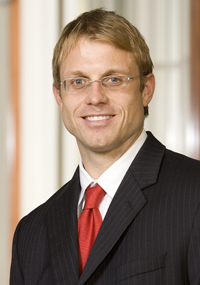
Sen. Sheldon Whitehouse (D-RI) announced that he’ll introduce a form of the “Buffett Rule” to Congress by Wednesday (Feb. 1). The rule is designed to insure that no millionaire would pay a lower tax rate than the middle-class.
Those promoting the Buffett Rule suggest it’s a moral principle that millionaires should not pay a lower tax rate than individuals in the middle class. Brad Badertscher, assistant professor of accountancy in the University of Notre Dame’s Mendoza College of Business, says the bill likely won’t go anywhere in Congress and describes how the “important but overlooked” notion of total taxes paid to the federal government must be considered to get a fair comparison.
“The reason a majority of wealthy individuals currently pay less than a 30 percent tax rate is because most of their income comes from capital gains which are taxed at a 15 percent rate," Badertscher says. "Comparing 30 percent to 15 percent may make it seem obvious that one would want to raise the rate that most millionaires pay, however, to have a fair comparison between the tax rates of different individuals, one needs to carefully consider the effective rate after including all federal taxes, such as the distribution of corporate taxes. One could view this as not just what you pay as an individual for taxes, but what the corporations you have invested in also paid in taxes. Call it the total taxes paid to the federal government rate.
“The reason this is important is because wealthy individuals in the U.S. are more likely to invest in businesses, and those businesses help grow the economy and pay corporate taxes. So indirectly through their investments, many wealthy individuals are likely taxed once at the corporate level and then again at the capital gains level. This double taxation is one of the main reasons the capital gains rate is lower than most of the ordinary income rates. In fact, according to the Congressional Budget Office, after considering total taxes paid to the federal government, the tax rate of the top 1 percent is roughly 29.5 percent…essentially the same as the 30 percent proposed by the Buffett Rule. Thus, after closer examination, more caution is necessary before taxes are raised on individuals that likely create jobs and drive growth in our economy.”
Contact: Brad Badertscher, 574-631-5197 or bbaderts@nd.edu